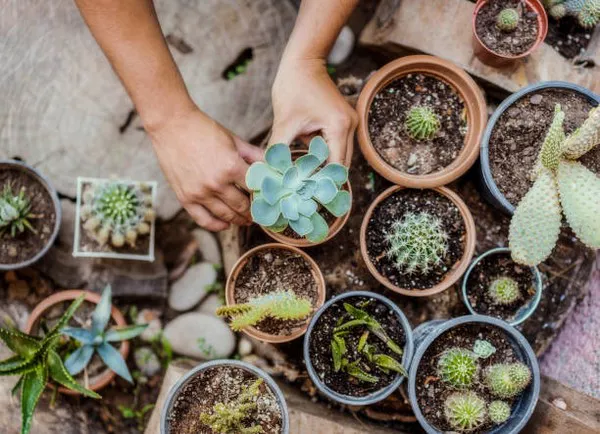Succulents are known for their unique and captivating appearance, with fleshy leaves and interesting shapes. However, as succulent enthusiasts can attest, these plants sometimes surprise us with unexpected growth. If you’ve ever wondered, “What is growing out of my succulent?” you’re not alone.
Succulent Pups
One of the most common occurrences when it comes to growth on succulents is the emergence of pups, also known as offsets or baby succulents. These are tiny, miniature versions of the parent plant that sprout from the base or sides of the main succulent. Pups are a natural way for succulents to reproduce, and they often appear as small rosettes or clusters of leaves.
These miniature succulents can be left to grow alongside the parent plant or carefully removed and potted separately once they have developed their own roots. This is a fascinating aspect of succulent growth, and many enthusiasts enjoy propagating these pups to expand their succulent collection.
Flower Stalks
Another common sight in succulents is the emergence of tall, slender stems that bear flowers. Succulents are not only admired for their leaves but also for their stunning blooms. When a succulent begins to grow a flower stalk, it is a sign that the plant is mature and ready to reproduce.
The appearance of a flower stalk varies depending on the succulent species, but it often emerges from the center of the rosette or from between the leaves. While the flowers can be a beautiful addition to your succulent, they may also signal the end of the plant’s life cycle. Many succulents are monocarpic, meaning they will flower once and then die. However, not all succulents follow this pattern, so it’s essential to know the specific requirements of your succulent species.
Aerial Roots
Aerial roots are another phenomenon you may observe when examining your succulents. These are roots that grow above the surface of the soil and can appear as tiny hair-like structures emerging from the stem or leaves. Aerial roots serve various purposes for succulents.
One of the primary functions of aerial roots is to anchor the succulent in place, especially in rocky or loose soil conditions. They can also help the plant access moisture and nutrients from the air. While the presence of aerial roots is generally not a cause for concern, they can be pruned if they become excessive or unsightly.
Monstrous and Crested Growth
Sometimes, succulents exhibit abnormal growth patterns that can be both fascinating and unusual. Two of these growth forms are known as monstrous and crested growth.
Monstrous growth occurs when a succulent develops abnormal, irregular growth patterns, often resulting in deformed or exaggerated shapes. These can appear as warty, lumpy, or contorted growths on the plant. While monstrous growth may not be aesthetically pleasing to all, it is a natural occurrence and can add a unique character to your succulent collection.
Crested growth, on the other hand, is a rare and highly sought-after phenomenon in succulents. It occurs when the growing point of the succulent becomes elongated and flattened, resembling a crest or a brain-like pattern. Crested succulents are prized for their distinctive appearance, and many collectors actively seek out these unique specimens.
Pests and Disease
Sometimes, the growth you observe on your succulent may not be a natural part of the plant but rather a sign of pests or disease. Succulents can fall victim to various pests, such as mealybugs, aphids, scale insects, and spider mites. These pests can cause visible damage to the plant, including discolored or deformed growth, so it’s essential to inspect your succulents regularly and take action if infestations are detected.
Additionally, succulents can be susceptible to fungal or bacterial diseases, which may manifest as unusual growths, discoloration, or rot. Proper care, including well-draining soil, appropriate watering practices, and good air circulation, can help prevent these issues.
Conclusion
Succulents are a diverse and intriguing group of plants that can exhibit a wide range of growth patterns and unusual phenomena. Whether you’re encountering the emergence of pups, the appearance of flower stalks, the development of aerial roots, or the intriguing forms of monstrous and crested growth, each of these occurrences adds to the allure of succulents.
However, it’s important to stay vigilant and monitor your succulents for signs of pests or disease, as these can also affect their growth. With proper care and attention, you can enjoy the beauty and wonder of your succulents as they continue to thrive and surprise you with their growth habits.


